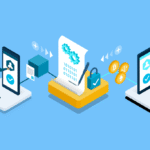Digital marketing leads the business world today. Advertising revenue will hit $700 billion by 2025. My direct experience shows how this massive growth has changed the way businesses build customer relationships.
Our client data matches the industry numbers. Email marketing yields up to 4,200% ROI on every dollar spent. The digital world now has 5.45 billion internet users, and 84% of consumers just need engaging content experiences. The real challenge is standing out among all the noise.
My experience spans over a decade of managing million-dollar campaigns. The strategies I’ll share are based on ground results that work in digital marketing. You’ll learn proven techniques that deliver measurable outcomes, supported by successful client campaign data.
The Digital Marketing Landscape in 2025
The digital world has changed dramatically, and AI and informed strategies have altered the map of business-customer relationships. A newer study shows that 41% of adults now use voice search, demonstrating a fundamental change in how consumers interact with brands.
Key trends shaping digital marketing strategy
Businesses now adapt to stricter data collection regulations through privacy-focused marketing. AI-powered individual-specific experiences are a vital component, with 73% of consumers preferring personalized shopping experiences. The rise of social commerce continues to grow, with revenues expected to surpass $1 trillion by 2028.
What’s working vs what’s dying
Digital strategies have replaced traditional marketing approaches. The original focus on TV, print, and radio advertising has evolved. Today’s successful companies prioritize:
- Website optimization and content strategy
- Social media participation and influencer collaborations
- Informed personalization
- AI-powered customer interactions
Development of digital marketing channels
Social media platforms now integrate advanced shopping features as the channel ecosystem matures. Smart speakers are now in 35% of U.S. households, and businesses optimize their voice commerce strategies. In addition, B2B marketing has changed significantly, with millennials now comprising 75% of business buying teams.
These changes require marketers to optimize while delivering measurable results. Traditional metrics have given way to sophisticated performance measurements, and marketing investments must show clear ROI.
Highest ROI Digital Marketing Channels
New data shows how different digital marketing channels perform. Email marketing delivers an impressive ROI of $36 for every dollar spent, making it the lifeblood of result-focused businesses.
Analysis of channel performance data
SEO creates amazing value over time and generates an average ROI of 748%. We tested PPC advertising and found Google Ads returns $8 for every dollar invested. Social media platforms show different results, with Facebook leading ROI rankings among 40% of marketers.
Channel selection framework
Three key factors determine the right marketing channels. Business type shapes how well each channel works—local stores do better with local SEO, while online shops get better results from social ads and email marketing. The target audience’s priorities are vital—younger users prefer Instagram and TikTok, while professionals engage more with LinkedIn and newsletters.
Budget allocation strategies
The 70/20/10 rule is a great way to split your marketing budget:
- 70% to channels that consistently perform well
- 20% to new opportunities
- 10% to testing new ideas
Studies show that using 5-10% of the budget for analytics will give optimal tracking results. Online businesses that make 50% or more sales online put 27% of their marketing budgets into mobile platforms. This number will keep growing.
Data-Driven Digital Marketing Strategies
Companies that use informed strategies see five to eight times more ROI than others. Marketing teams have started to realize this fact, with 87% of them admitting that data remains their company’s most untapped resource.
Marketing analytics that matter
The success of digital marketing depends on tracking metrics that count. Our research reveals that 89% of top marketers track strategic metrics such as gross revenue, market share, and customer lifetime value. These essential performance indicators include:
- Customer Acquisition Cost (CAC)
- Customer Lifetime Value (CLV)
- Return on Ad Spend (ROAS)
- Conversion Rate Optimization (CRO)
Testing and optimization approaches
A/B testing is the lifeblood of data optimization. This method helps marketers compare two content versions and measure their effectiveness against business objectives. Multivariate testing adds another layer by evaluating multiple variables simultaneously, which helps learn about customer priorities.
Performance measurement frameworks
The SMART framework (Specific, Measurable, Achievable, Relevant, Time-bound) sets effective goal-setting and measurement foundations. Latest studies show that 40% of brands will increase their data-driven marketing budgets. They understand how it affects their decision-making and customer involvement.
Companies with unified data systems have seen 89% increased sales. Customer Data Platforms (CDPs) combine information from multiple sources, enabling immediate decision-making and customized customer experiences. Marketing teams can now calculate both campaign reach and quality of customer interactions through conversation intelligence.
Future-Proof Digital Marketing Tactics
Digital marketers must remain competitive as technology advances rapidly. Market research shows that AI marketing automation is projected to reach $107.50 billion by 2028, a dramatic jump from $15.84 billion in 2021.
Emerging technologies and platforms
Blockchain technology has revolutionized the industry by building consumer trust and ensuring transparency. It helps track transactions securely and authenticates product legitimacy. VR and AR transform how customers interact with brands, and 47% of consumers prefer brands that cater to their specific needs.
Automation and AI integration
Companies see impressive results when they use AI-powered marketing automation. Our research reveals that businesses using AI in their marketing achieve an average 30% increase in ROI. The best uses include:
- Email marketing optimization
- Social media content generation
- Predictive analytics for customer behavior
- Dynamic creative optimization
AI chatbots now handle customer service more efficiently than human teams. They process orders and answer questions faster.
Scalable growth strategies
Evidence-based decision-making paves the way to lasting growth. Continuous structured testing programs remain uncommon, though digital media offers excellent measurability. Successful scaling needs a balanced approach that focuses on:
First-party data has become crucial as privacy regulations get stricter. Studies show that better first-party data usage can double incremental revenue. Businesses can maximize every digital impression’s value through deterministic matching while following privacy rules.
Dynamic creative optimization shows AI’s practical value by increasing profitability up to 12 times through improved creative quality. Brands can now deliver targeted, tailored content at scale without exhausting their resources.
Conclusion
Digital marketing continues to progress with compelling results from the ground. Our client work shows that informed strategies combined with AI automation deliver exceptional ROI. Email marketing leads with a 4,200% return, and businesses achieve 748% ROI through proper SEO implementation.
The marketing landscape in 2025 will need businesses to adapt to major changes. Privacy-focused marketing, AI-powered personalization, and blockchain technology have altered the map of customer engagement. Successful companies now put 70% of their budget into proven channels and reserve 30% to explore new opportunities.
Companies that make informed decisions on the future. Our research reveals that businesses using unified data systems get 89% higher sales. This happens especially when they combine AI automation with strategic performance measurement. The digital world changes faster each day. Companies can thrive in this ever-changing environment by focusing on customer value, measurable results, and emerging technologies.








Leave a Reply